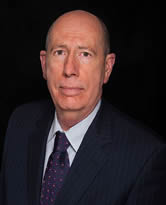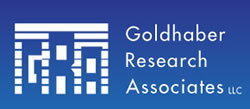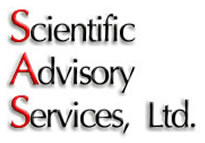Successful Interaction in the Attorney-Forensic Chemical Expert Dyad
"While basic education is important, the total experience of the expert is critical."
How can attorneys and experts best support one another?
“Dyad” is defined as ‘something that consists of two elements or parts’. The successful attorney-chemical expert “dyad” is, in my opinion, critically dependent on creating a trusting, workable, two-way communication. The expert must be able to educate the attorney in the complexities of the subject case, so that the attorney is comfortable in mediation or court procedures. The attorney must be able to explain the key litigation areas that are essential to winning the case. This interactive communication and its success for the case and client, must ensure that the expert is supporting his/her credentials according to documented evidence of scientific and engineering certainty.
Education vs. experience: Which is more valuable?
While basic education is important, the total experience of the expert is critical. Having both industrial and academic experience along with extensive litigation background in both plaintiff and defense cases provides the total value required for success. Education provides a sound foundation, but combined with such experience, it enables the attorney to implement the ‘mode of thinking’ and analyze information necessary for effective two-way communication. In both simple and complex cases, the expert must be able to request, review, and analyze information, in order to crystallize and communicate opinions that support the key facts presented by the attorney.
What should attorneys look for in a product liability and chemical expert?
- Having an expert that can write well is essential for affidavits and reports.
- In these fast moving times, the ability to research supporting documents is critical.
- The expert’s ability to request, review, analyze and summarize key documents required to support his/her opinions, is essential.
- Beware of advertised “cause and origin” experts. They are behind the times.
- The patent literature is a great resource for an expert to find and document issues with certain types of products that an invention overcomes. Very useful as prior art background. Trust an expert who uses the patent literature to help win your case.
- Beyond Federal/State Law lies the important area of Voluntary Codes, Standards and Test Procedures. Your expert should know about, and use them, as appropriate for your case.
Things to be aware of when approaching a product liability case:
- Conducting tests are not always the best approach since you may not be able to simulate the exact conditions of the subject incident.
- Having a safety data sheet (SDS) is always relevant to see if the acute and long term toxicity is shown and has been transferred to the product label.
- It is imperative to provide external expert analysis beyond that provided by the manufacturer of the subject product.
- In fire situations, fire marshals may not have the expertise necessary to analyze your case (no disrespect intended, of course), as they may lack the scientific understanding and training required.
- A good expert will be able to point out whether the defendant who makes a hazardous product knows about and uses protective garments when testing their hazardous product. If they don’t, you can argue your point with “they knew, or should have known and thus their testing method is deficient”.
My top tips when working on a product liability case:
- The origin and cause of a fire is not always obvious. Determining each can be the path to winning or losing your case.
- Sometimes, uncovering a safer alternative can win your case.
- Many chemicals, including “naturals”, have varying degrees of “toxicity” and impact on the injured party. Dose exposure can be the difference between demonstrating responsibility and lack thereof.
- The product labels and warnings/instructions must coincide with the claims.
- Just because a chemical ingredient, or a product formulation has some toxic behavior, under certain circumstances, does not mean it is BAD. Products that work many times require “strong” chemicals. They just need to be handled properly by trained individuals.
Meyer R. Rosen, President of Interactive Consulting, Inc., is a Nationally Certified consulting chemist/chemical engineer and an experienced forensic expert witness for plaintiff/defense attorneys and insurance companies in both Federal and State cases. I provide technical guidance in personal injury, product liability, intellectual property and trade secret matters. My background includes over 35 years of industrial and fifteen years of academic experience. Areas of expertise include, but are not limited to: fires, explosions, hazardous chemicals, chemical fires, chemical exposure, toxic exposure, chemical burns and cosmetic science. Common cases are typically associated with: household & industrial products, specialty chemicals, cosmetics and hair relaxers. I am also experienced in analysis of industrial accidents, technical aspects of warnings, instruction & labels, OSHA regulations, and Codes & Standards.
©Copyright - All Rights Reserved
DO NOT REPRODUCE WITHOUT WRITTEN PERMISSION BY AUTHOR.











